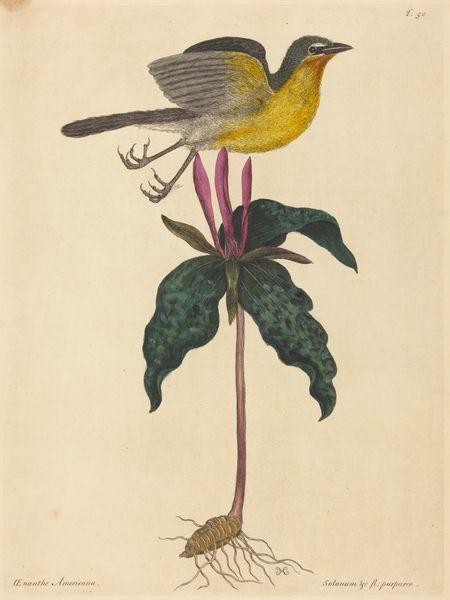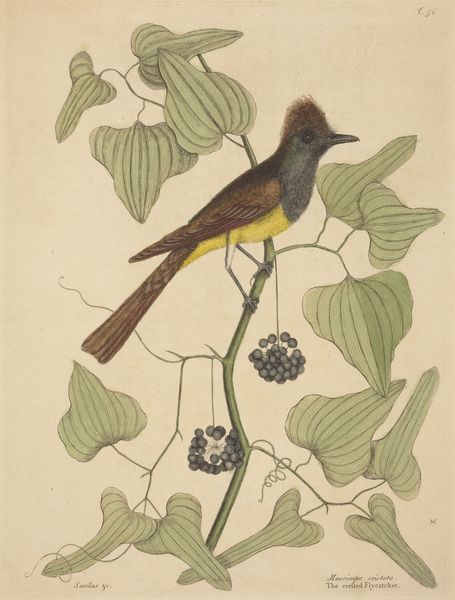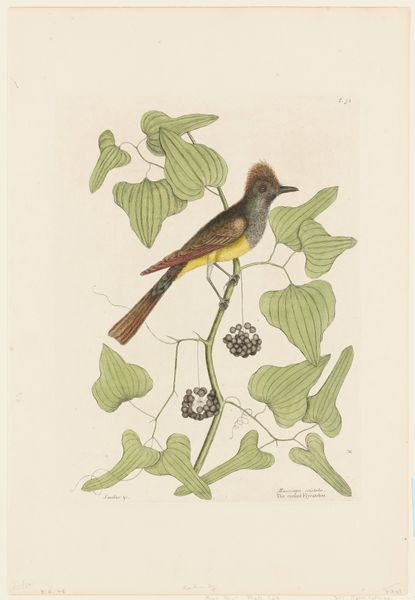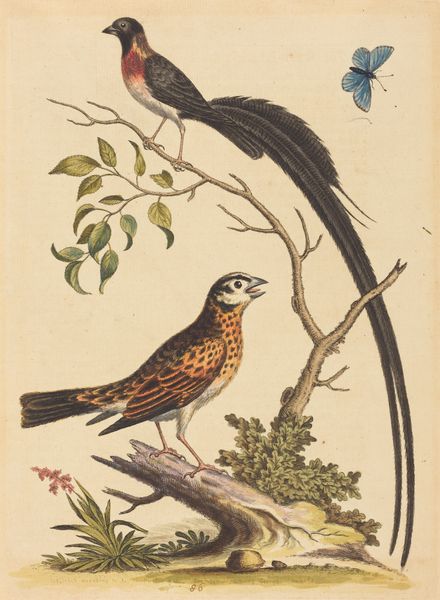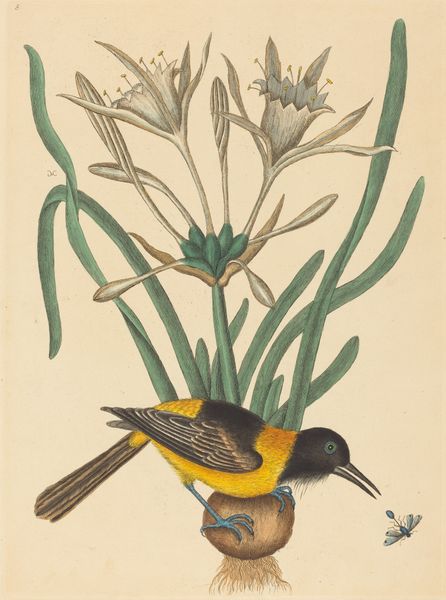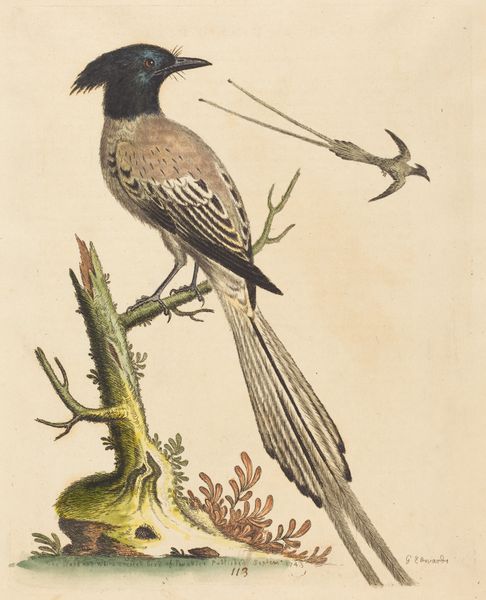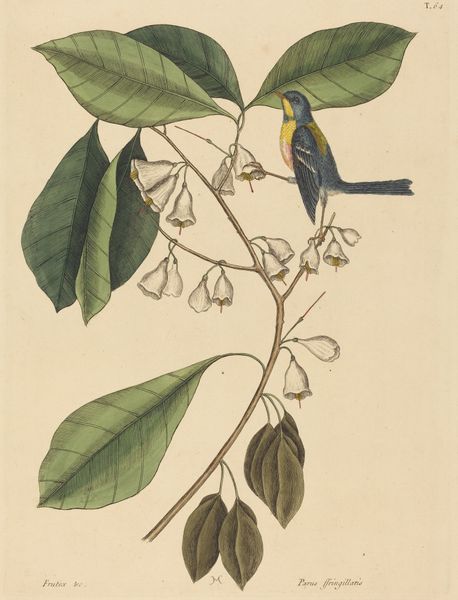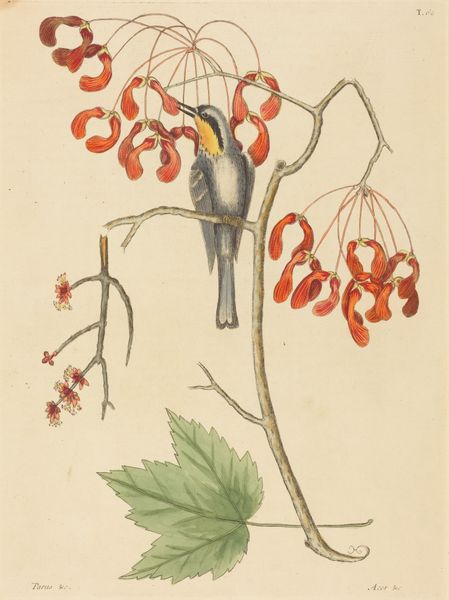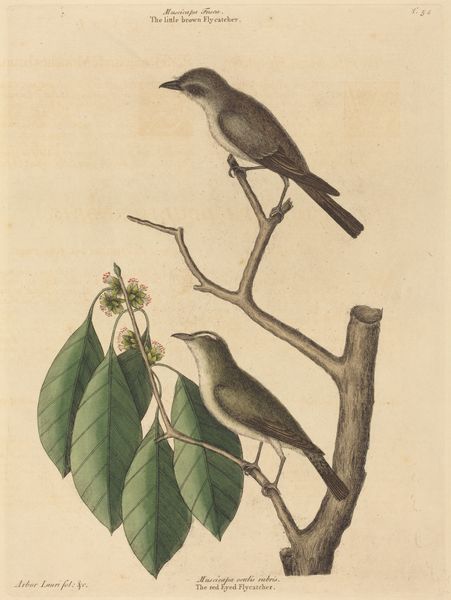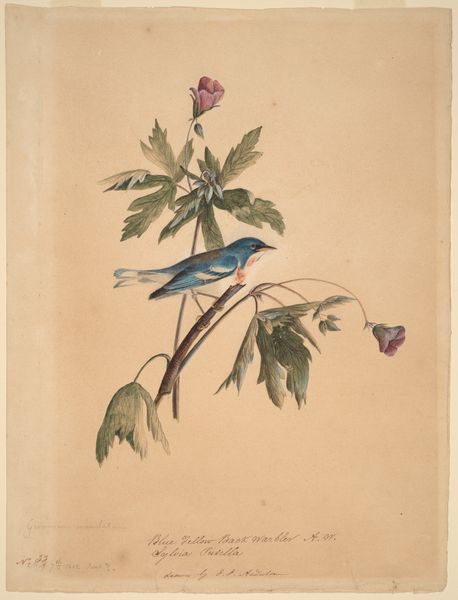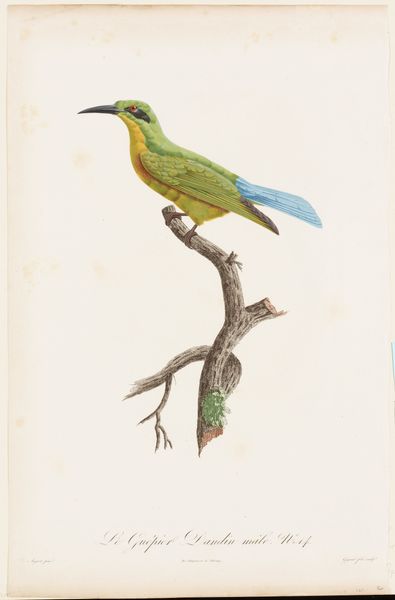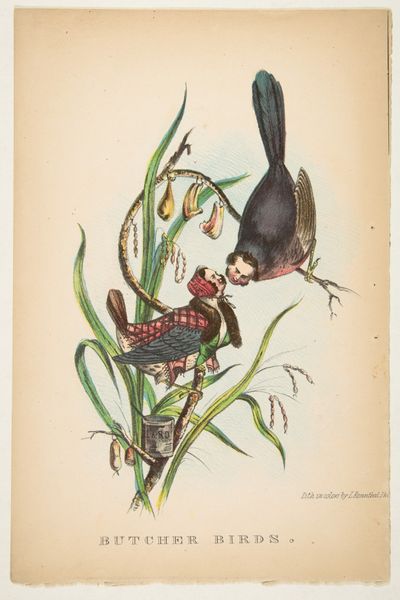
The Birds of America from Drawings Made in the United States 1840 - 1844
0:00
0:00
drawing, coloured-pencil, print, watercolor
#
drawing
#
coloured-pencil
# print
#
landscape
#
figuration
#
watercolor
#
coloured pencil
#
romanticism
#
genre-painting
#
naturalism
Dimensions: book: 10 7/16 x 6 11/16 in. (26.5 x 17 cm) page: 10 x 6 3/8 in. (25.4 x 16.2 cm)
Copyright: Public Domain
Editor: We're looking at "The Birds of America" by John James Audubon, specifically a colored pencil drawing and print of a Fork-tailed Flycatcher, created between 1840 and 1844. It’s so delicately rendered, and I’m struck by how this work balances scientific observation with artistic presentation. What strikes you about it? Curator: I think it's crucial to view Audubon's "Birds of America" within its historical context. This wasn't just an artistic endeavor, but also a social and political statement. Consider the time period. What did it mean to categorize and classify nature in a rapidly expanding United States, a nation defining itself and its relationship to the environment, and claiming ownership of the land and its resources? Editor: That’s an interesting way to put it. So you’re saying it’s less about ornithology and more about... asserting dominance? Curator: Not exactly. Think about the role of institutions like museums and scientific societies. Audubon actively sought their validation and patronage. His work became a tool for defining what American nature *was*, shaping public perception and fueling a sense of national identity tied to the natural world. Did that tie include exploitation of these species? Did his prints serve the conservation efforts of the time? These are vital questions when examining Audubon. Editor: So the image itself participates in a broader conversation about America’s relationship with its environment...a sort of visual rhetoric? Curator: Precisely. His detailed illustrations played a key role in shaping public discourse and influencing policy, particularly around conservation and land management, but were also harnessed for resource extraction and expanding infrastructure projects. And we have to be aware of his representations being built on knowledge extracted from enslaved persons and indigenous communities. This complex and ambivalent public role is an inherent quality of Audubon's images. Editor: That completely reframes how I see this artwork. I'm thinking less about the aesthetic beauty now and more about the power structures it reflects and helped to create. Thanks! Curator: Glad to offer a different way to look at it. Recognizing those power dynamics is crucial to understanding not just Audubon but art's broader impact on society.
Comments
No comments
Be the first to comment and join the conversation on the ultimate creative platform.
